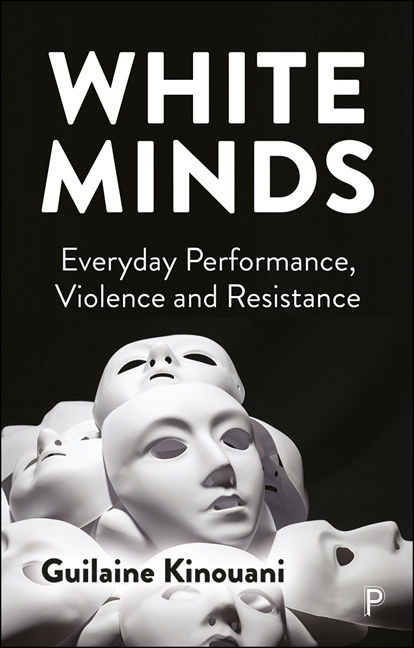Book contents
- Frontmatter
- Dedication
- Contents
- Acknowledgements
- Preface
- Note on language
- Introduction
- 1 Whiteness, time and space
- 2 White gazes
- 3 White envy
- 4 White sadism
- 5 White trauma
- 6 White dissociation
- 7 White shame
- 8 White ambivalence
- 9 White complicity
- Whiteness and resistance: by way of conclusion
- References
- Index
- Frontmatter
- Dedication
- Contents
- Acknowledgements
- Preface
- Note on language
- Introduction
- 1 Whiteness, time and space
- 2 White gazes
- 3 White envy
- 4 White sadism
- 5 White trauma
- 6 White dissociation
- 7 White shame
- 8 White ambivalence
- 9 White complicity
- Whiteness and resistance: by way of conclusion
- References
- Index
Summary
Smelly, leaky parcels. Neighbours repeatedly disposing of their rubbish on my doorstep. This is what first comes to mind when I think of my earliest encounter with whiteness in the UK. It was only weeks after I arrived in England and moved into a northwest London flat. I was in my early 20s and did not really know anyone aside from my husband-to-be. It was me who had to deal with the nausea-inducing, overflowing bags of waste, which often required cleaning the entire entrance to our flat, usually when I was on my way out to university, because I left later in the morning. This went on intermittently for weeks until I decided that I had had enough.
So, one morning, I finally opened these now familiar, smelly, leaky parcels. I kneeled outside in the cold and rummaged through several bin bags, in search of clues as to the identity of their owner. I dug and dug in the rubbish. And, eventually, I found full names and an address. The perpetrators had helpfully not attempted to cover up their tracks. I went to knock on the door of the newly identified neighbours. The address was home to a woman and her adult son. Both were people racialised as white and markedly older than me. The son was at least double my age. I had seen them around. They rarely left their flat and I assumed that they were unemployed. As I faced the woman with the indignant confidence of someone who had just survived the most undignified of ordeals, I explained that bin bags had been appearing outside of my front door for a while. Then, I showed her the proof of address and identity I had managed to gather. Finally, I announced that I would be keeping these documents so that in the event of any further incidents, I would simply go straight to the police. The white woman started begging and crying. It was clear she knew exactly what had been going on. She claimed that her son, who was nowhere to be seen, was ‘doing it’ and pleaded for me not to report him to the police. I never did. The bin bags stopped appearing in front of our door from that day on.
- Type
- Chapter
- Information
- White MindsEveryday Performance, Violence and Resistance, pp. xii - xviiiPublisher: Bristol University PressPrint publication year: 2023

